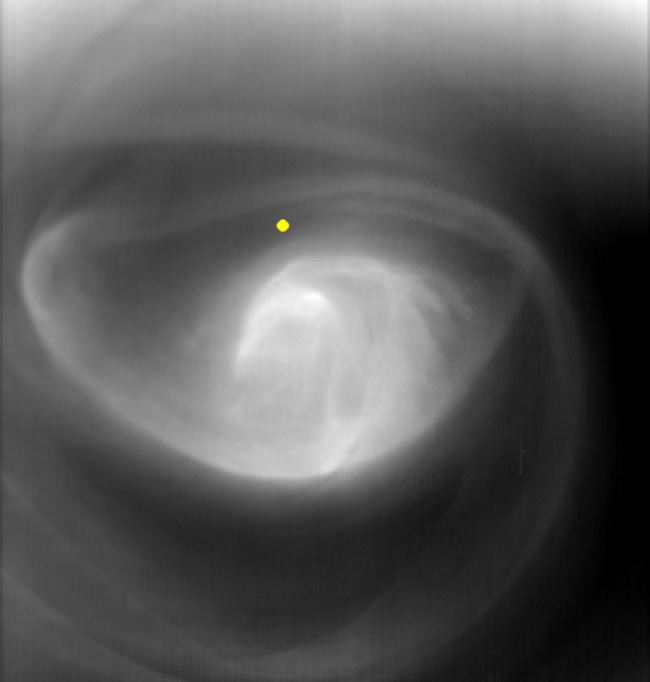Giant Eye of Venus Proves Shifty

A restless'hurricane eye' morphs and changes shape within days at the south pole ofVenus, according to observations from the Venus Express spacecraft.
The core ofthe gigantic vortex glows brightly in thermal infrared, suggesting thatturbulent atmospheric gases are sinking downward and making the region hotter.
?Simplyput, the enormous vortex is similar to what you might see in your bathtub onceyou have pulled out the plug? said Giuseppe Piccioni, a Venus Express scientistin Rome, Italy.
The studyof this phenomenon first appeared in the November 2007 issue of the journal Nature.Scientists released new images of the storm this week.
The1,240-mile-wide vortex (2,000 km) can shift in 24 hours from an eye shape to anhour-glass shape, and at other times appears oval. The whole structureresembles a rapidly changing hurricane eye as seen on Earth, with somedifferences.
"Themain difference is that the Venusian vortex is upside down with respect to the [Earth]hurricane, meaning that the vertical air flow of the hurricane is down-top[meaning air flows inward at the bottom of a storm and then up through thestorm] while the Venusian one is top-down," Piccioni told SPACE.com.
The Venusvortex also differs from Earth hurricanes because of its monstrous planetaryscale, and it is probably permanent, according to Piccioni.
Breaking space news, the latest updates on rocket launches, skywatching events and more!
A mystery stillsurrounds how the vortex formed in the first place. The atmospheric gases flowdynamically in different directions and at different altitudes.
?Oneexplanation is that atmospheric gases heated by the Sun at the equator, riseand then move poleward," said Colin Wilson, a Venus Express scientist atthe University of Oxford, Great Britain. "In the polar regions, theyconverge and sink again. As the gases moves towards the poles, they aredeflected sideways because of the planet?s rotation.?
Scientistshave long observed Venus' wackyweather features. The 'hurricane eye' was discovered in 1974 by the Mariner10 spacecraft. A similar structure exists on the planet?s north pole, which wasobserved by the Pioneer Venus mission in 1979.
- IMAGES: Beneath the Clouds of Venus
- The Wildest Weather in the Galaxy
- IMAGES: Postcards from Venus
Jeremy Hsu is science writer based in New York City whose work has appeared in Scientific American, Discovery Magazine, Backchannel, Wired.com and IEEE Spectrum, among others. He joined the Space.com and Live Science teams in 2010 as a Senior Writer and is currently the Editor-in-Chief of Indicate Media. Jeremy studied history and sociology of science at the University of Pennsylvania, and earned a master's degree in journalism from the NYU Science, Health and Environmental Reporting Program. You can find Jeremy's latest project on Twitter.
